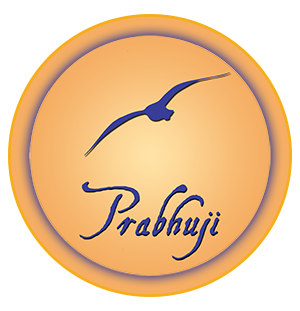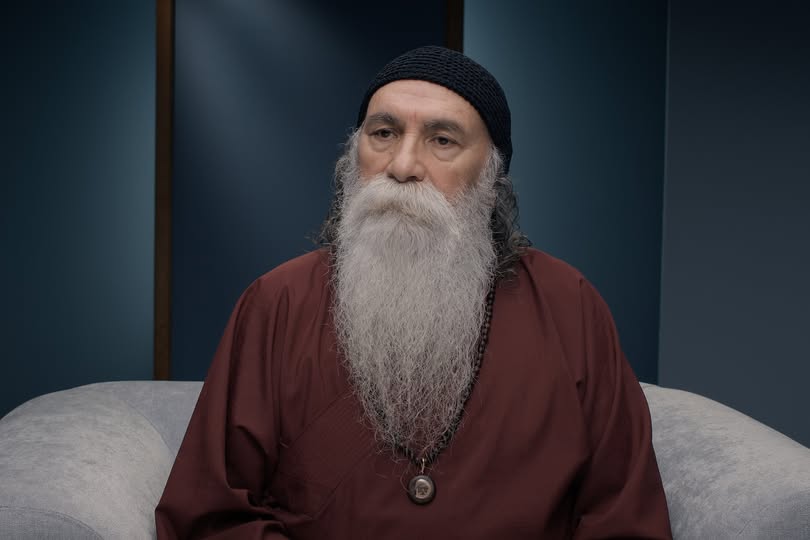“My Sanatana Dharma does not require abandoning its Vedic matrix to affirm that the Avatar has already manifested. Such a manifestation does not emerge from the Hellenistic imagination or the Roman imperial heritage. Instead, it finds its incarnation in Adon Yeshua, who does not come from a doctrinal rupture, but from a hermeneutical continuity inscribed in the heart of Judaism. Yeshua is born from the Torah, formed in the Talmud, ignited by Hasidic spirituality, and revealed in the esoteric structure of Kabbalah. His figure does not come from outside, from the exterior: it is articulated from within, like a flower growing from the very root of biblical Israel.
The Torah is not a foreign text to me, nor is it a document of a distant people. It is my Shastra: normative, revealed, living Scripture. I do not read it as a testimony of the past, but as a matrix in action, capable of giving rise, today, to the Messiah who has already come.
My form of Hinduism is not affirmed in opposition to other religious forms. It is not defined by negation, nor by the superficial adoption of external dogmas. It is realized in the capacity to integrate without dissolving, to synthesize without losing uniqueness. Within this integration, Adon Yeshua does not appear as a foreign figure, but as an original face, revealed in a genealogy that is not foreign to him.
He does not transgress the Law. He embodies it with radical fidelity. As it is written:
οὐκ ἦλθον καταλῦσαι ἀλλὰ πληρῶσαι
“I have not come to abolish, but to fulfill”
(Matthew 5:17)
This fidelity is not exhausted in legal observance. It refers to a link with the mystery that constitutes the root of all revelation. That same fidelity vibrates in the tzadikim of Hasidism, in the infinite dynamics of the Talmud, and in the symbolism of the Zohar. Where thought becomes prayer and interpretation becomes a path, Yeshua becomes recognizable.
This Hinduism does not postulate a new religion nor does it seek to replace existing ones. Nor does it present itself as syncretism or ideological eclecticism. It is a return through progress: a return to a point prior to separations, where Wisdom and Presence are combined without division. At that point, Jesus does not impose himself as an external dogma, but is recognized as an active and living Presence.
וְרֽוּחַ־אֱלֹהִים מְרַחֶ֖פֶת עַל־פְּנֵ֥י הַמָּֽיִם
“And the spirit of God hovered over the surface of the waters.”
(Genesis 1:2)
That Spirit never ceases to move. It is not bound by confessional boundaries or rigid liturgical forms. It manifests itself where there is openness, listening, and real transformation. Its action does not belong to the past; it is present in action. My lineage is Jewish. My inner language is Vedantic. In Jesus, I find the manifestation that unites both without confusing them, without opposing or subordinating them. In Him, the Hebrew Shastra acquires flesh, fire, and mercy.
It is not an artificial synthesis: it is a silent consummation. My path is neither fragmented nor bifurcated. It is completed in this convergence, in which what seemed distant reveals its common belonging to a single Truth that allows itself to be received but not possessed.
My Hinduism is not reduced to a beginningless accumulation of diverse religious elements. It does not confuse plurality with dissolution, nor openness with ambiguity. It is a consciousness shaped by Hebrew wisdom, but not limited by confessional exclusions. It is ordered from the One, without closing off the multiplicity of names, forms, and mediations. My Hinduism shows me a Christianity that is not constituted in rejection of the Torah. It affirms it as a permanent foundation, as a normative structure that has not been surpassed or abolished, but recognized in its essential validity. It is not a substitution, nor a mere historical prolongation, but a theological continuity that consecrates the Law as a living expression of the divine will. My Hinduism shows me a Judaism in which the Messiah does not represent an expectation projected toward an uncertain future. His figure does not remain as an absence or a postponed promise. His manifestation has already occurred, not in mythical or symbolic terms, but in a concrete historicity that gathers and fulfills the messianic tension inscribed in Scripture. My Hinduism does not show me dimensions that compete with each other as antagonistic systems. It shows me dimensions intertwined in me as languages that, from different registers, participate in the same aspiration: to recognize the eternal when it bursts into the temporal, when it is spoken in words, offered in action, and incarnated in history.
My orientation does not respond to a logic of doctrinal substitution or to a synthesis without rigor. It proceeds from a fidelity to what has been revealed that does not contradict its formal multiplicity and symbolic variety. Jesus, as Messiah, does not annul Judaism; he brings it to an unexpected but recognizable consummation. The Torah, as Shastra, is not replaced: it is illuminated from within.
Text 22
ekadaa tu shakadhisho
himatungari samaayayau
hunadeshasya madhye vai
giristhan purusam shubhano
dadarsha balaram raajaa
Once upon a time the subduer of the Sakas went towards Himatunga and in the middle of the Huna country (Hunadesh – the area near Manasa Sarovara or Kailash mountain in Western Tibet), the powerful king saw an auspicious man who was living on a mountain. The man’s complexion was golden and his clothes were white.
Text 23
ko bharam iti tam praaha
su hovacha mudanvitah
iishaa purtagm maam viddhi
kumaarigarbha sambhavam
“The king asked, ‘Who are you sir?’ ‘You should know that I am Isha Putra, the Son of God’. he replied blissfully, and ‘am born of a virgin.’ ”
(Bhavishya Purana: Pratisarga Parva, Chaturyuga Khanda Dvitiyadhyayah, 19th Chapter, Texts 22 and 23)”
Prabhuji




